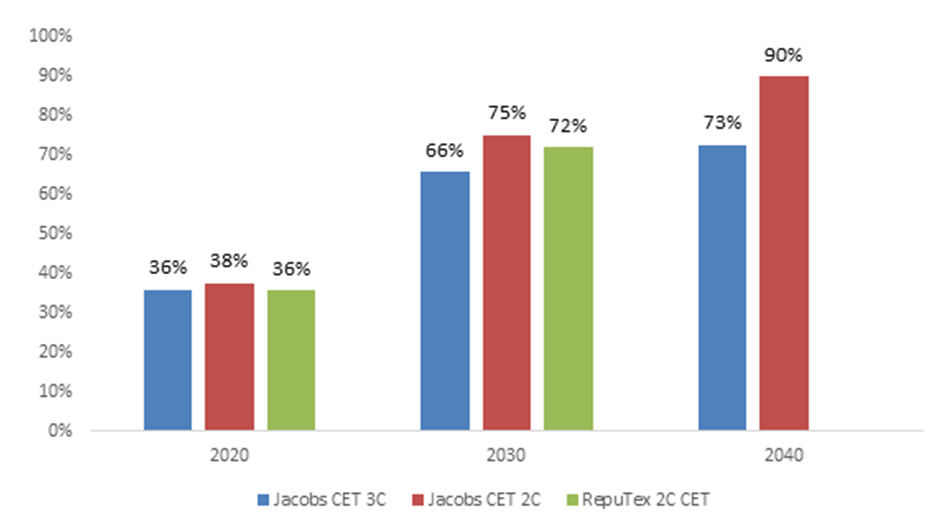A report released by The Australia Institute’s Climate and Energy Program has evaluated the energy policies required to meet Australia’s greenhouse gas emissions reduction targets pledged at the 2015 international climate summit in Paris.
The report, Meeting our Paris Commitment by Director of Research at The Australia Institute, Rod Campbell, shows the most efficient path to meeting Australia’s international commitment would see the electricity sector reducing emissions by between 40 to 50 per cent below 2005 levels in 2030.
The level of renewable energy penetration required to achieve emissions reductions of this magnitude under a CET-like policy have been estimated in separate assessments by well-known consultants Jacobs Group and RepuTex, with results summarised in the chart below:

Source: Jacobs (2017) Report to the independent review into the Future Security of the National Energy
Market: Emission mitigation policies and security of electricity supply and Reputex (2017) It’s the
economics, stupid
These studies show that if an abatement cost approach is used to set the 2030 electricity sector target, and a CET-like policy is used to achieve it, renewable penetration is likely to be in the order of 66-75 per cent by 2030.
The report found that further delay of the transformation of the electricity sector will increase the cost to the economy as a whole and push a greater proportion of the emission reduction task onto other sectors, such as agriculture, transport and manufacturing.
The Australian Government currently has a number of policies that are intended to reduce greenhouse gas emissions, including the Emission Reduction Fund (ERF), Large-scale Renewable Energy Target (LRET) and the minimum energy efficiency standards set under the Greenhouse and Energy Minimum Standards Act 2012 (Cth).
There are also a number of state, territory and local government policies that aim to abate emissions like the Victorian and Australian Capital Territory renewable energy target schemes, and the energy efficiency schemes that operate in Victoria, South Australia, New South Wales and the ACT.
However, according to the report, despite the existence of these policies, additional measures are likely to be required to meet the 2030 targets, with the Australian Government’s latest projections suggesting emissions will have to be reduced by a further 842-1202 million tonnes (Mt) of carbon dioxide equivalent (CO2-e) to meet the NDC commitments.
















